How to cook a turkey: The ultimate step-by-step guide
Learn how to cook a turkey and prepare it for Christmas dinner or Thanksgiving meal....
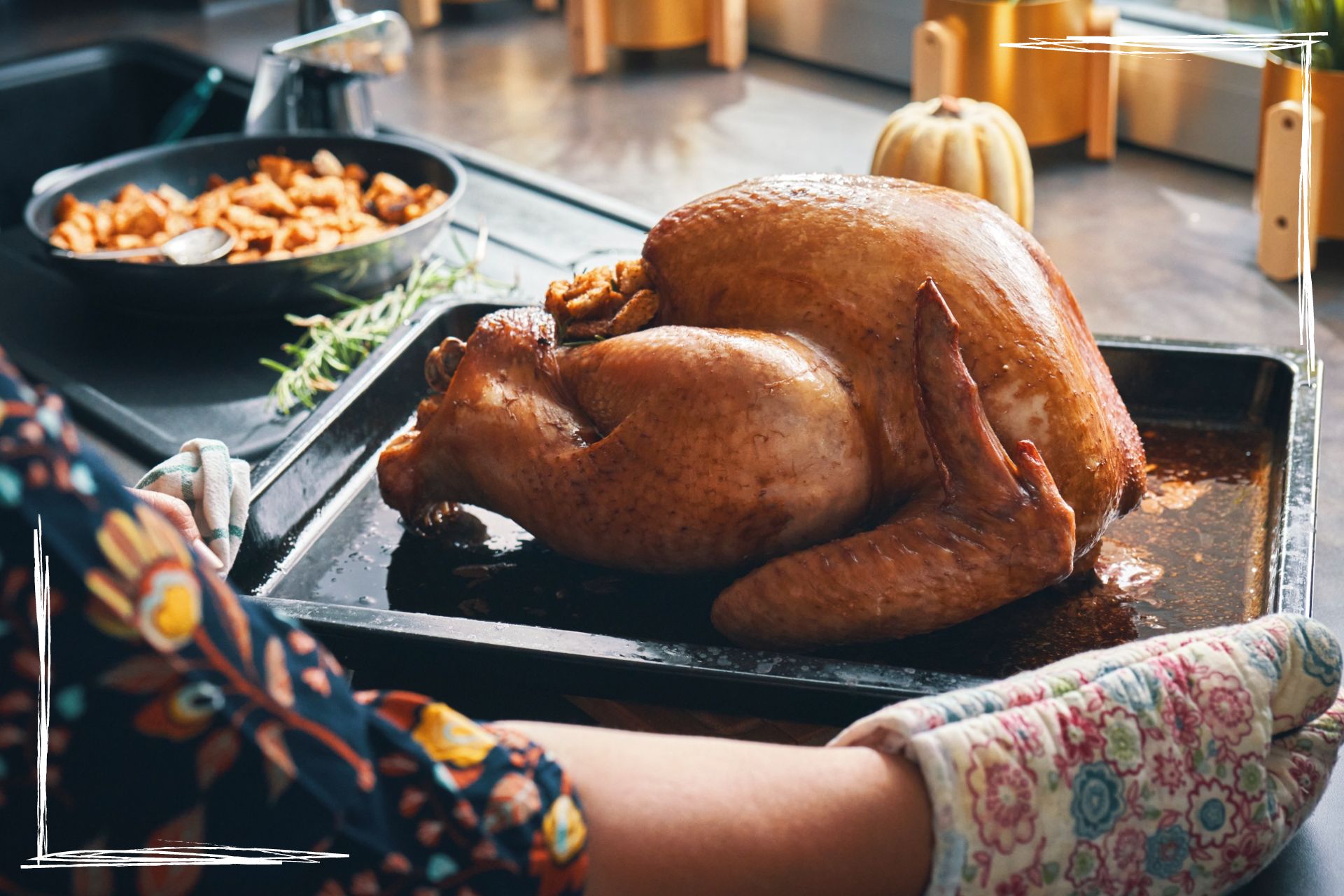

Samuel Goldsmith
Wondering how to cook a turkey for a Christmas dinner or Thanksgiving meal? Our step-by-step guide will help you achieve the perfect roast turkey every time.
Whether you’ve cooked a turkey before or this is your first time, the most important thing when it comes to cooking a turkey is to buy the best turkey that you can afford. These days, that doesn't necessarily mean paying the highest price. Some of the most affordable turkeys from well-known supermarket brands also happen to be of fantastic quality too.
Slower growing breeds such as bronze turkeys will have a more developed flavour and firmer texture - so keep an eye out for these, however, be aware they may come at a higher price.
"Other than choosing the right, quality bird, you also need to make sure you prepare the turkey and cook it in the best possible way," says food writer, Samuel Goldsmith.
That also means ensuring you rest the turkey for long enough and know how to carve a turkey. The main thing though is ensuring you cook it for long enough.
"You'll want to ensure moist meat and that the turkey is cooked the whole way through," advises Samuel. "There is nothing worse than uncooked turkey when it comes to serving on the big day."
How to cook a turkey
These days, if you've purchased your turkey from the supermarket, it will most likely be prepared for you. However, that's not always the case and many people like to support local farms or producers, so here are our top tips for preparing a turkey before cooking.
GoodtoKnow Newsletter
Parenting advice, hot topics, best buys and family finance tips delivered straight to your inbox.
If you're looking for flavour inspiration we'd recommend Gordon Ramsay's lemon, parsley and garlic turkey recipe - it's one of our most popular turkey recipes.
For smaller families, you may want to follow our steps on how to cook a turkey crown.
To cook a turkey you will need:
- 5-6kg turkey, thawed if frozen and any giblets removed
- 1/2 lemon
- ½ onion, cut in half
- A few sprigs of fresh sage, parsley, and rosemary plus extra to garnish
- 75g butter, softened
For the herb stuffing:
- 1 onion, chopped
- 50g butter
- 100g fresh white breadcrumbs
- 3tbsp chopped fresh mixed herbs such as rosemary (leaves only), parsley, and sage
- Finely grated zest 1/2 lemon
- 1 egg
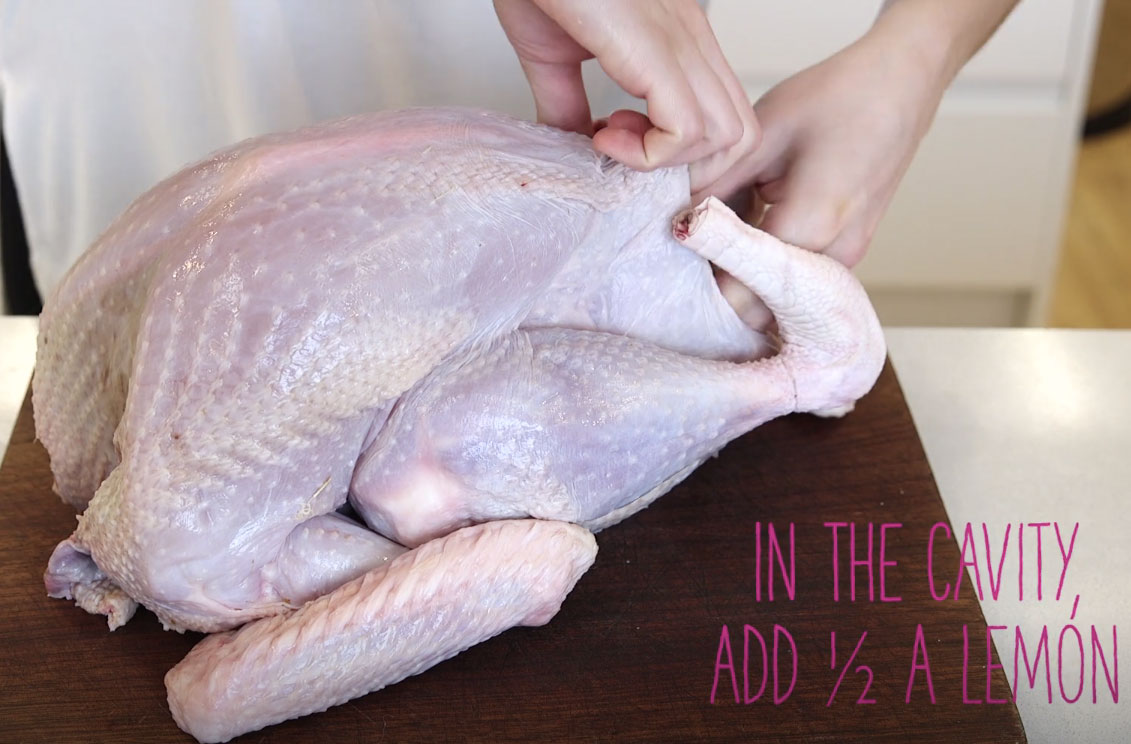
How to cook a turkey: Step 1
Preheat the oven to 190C/375F/Fan 170C/Gas Mark 5. Make the stuffing by frying the onion in the butter for 5 mins to soften. Remove from the heat and stir in the breadcrumbs, herbs, lemon zest, and egg. Mix well and season with salt and freshly ground pepper.
Place the turkey in a roasting tin or dish. If the legs are tied together remove the string and open them out. Place the lemon, onion, and herbs into the body cavity but don’t pack them too tightly.
"To ensure the turkey cooks evenly, remove any strings or bands that tie the legs together. This allows the heat to flow much more freely into the turkey cavity," says Samuel .
"This is also why the cavity of the turkey should never be packed with stuffing, there is a danger that the temperature reached inside the bird won’t be hot enough to kill off any bacteria."
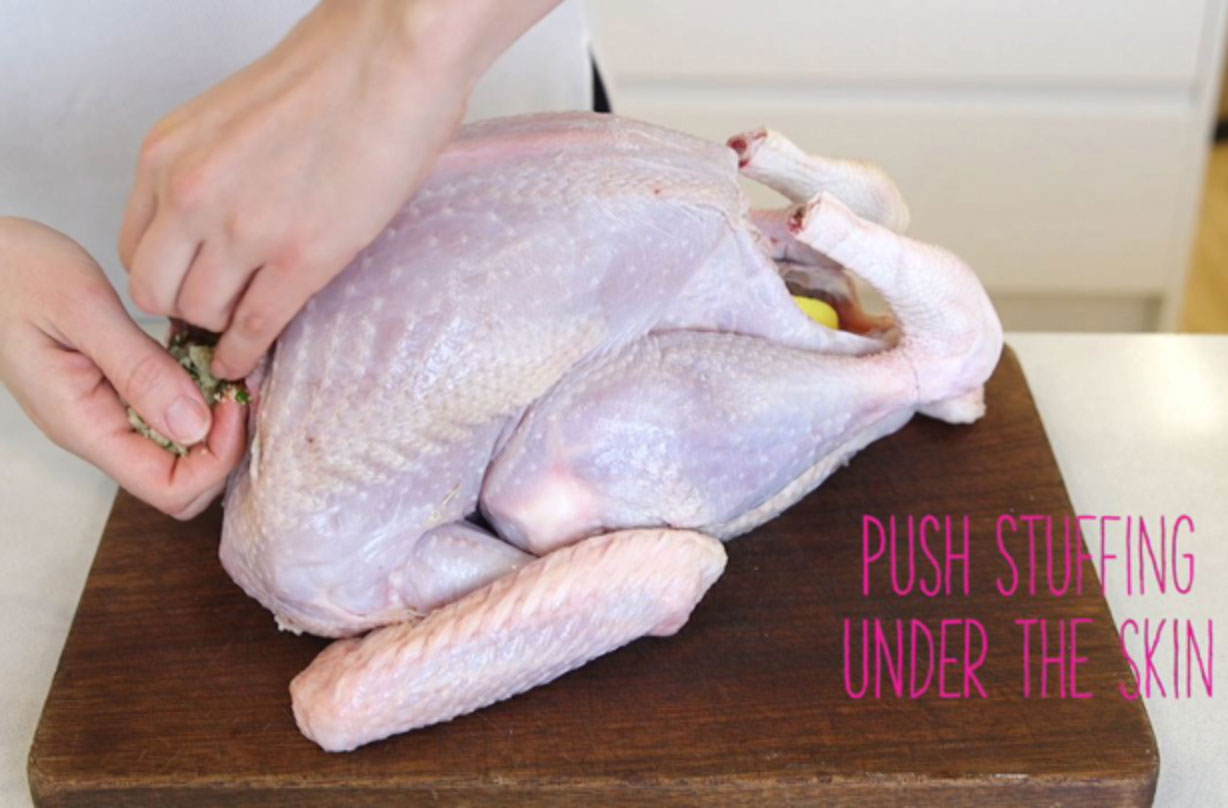
How to cook a turkey: Step 2
Lift the flap of skin covering the neck cavity and spoon the stuffing under the skin. Smooth the skin back over the stuffing and tuck underneath the turkey.
Any remaining stuffing can be spooned into a dish, dotted with a little butter, and baked for 30 mins. Alternatively, you can roll them into balls and bake them.
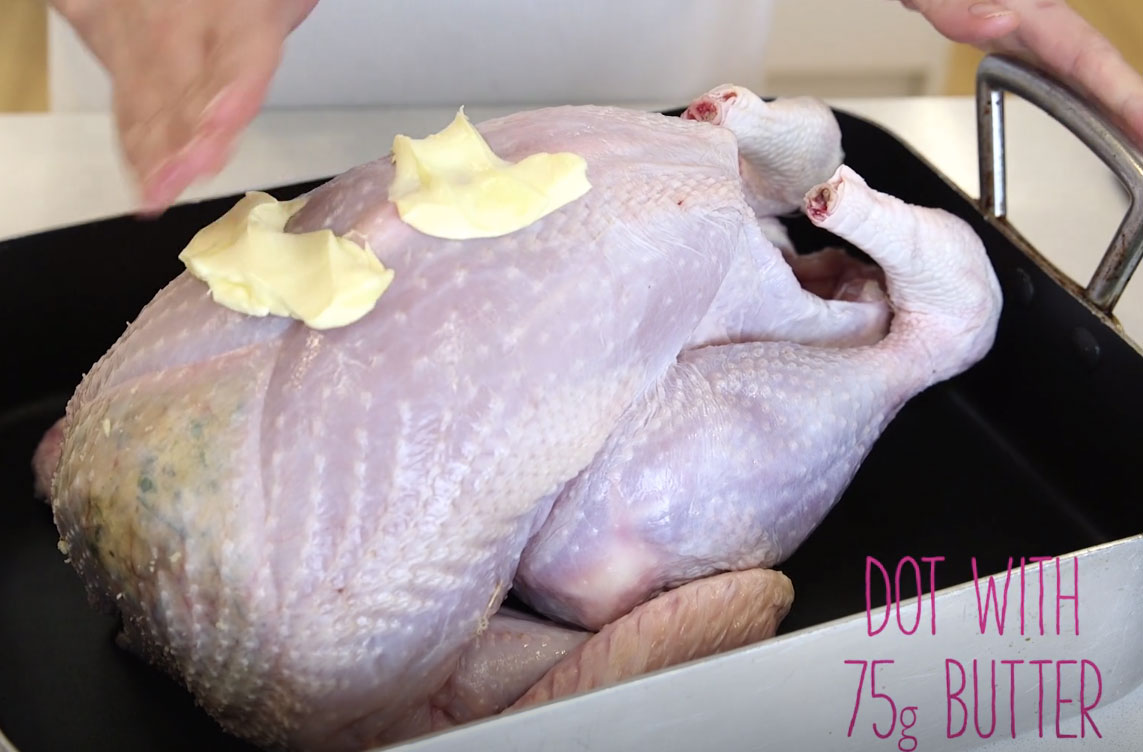
How to cook a turkey: Step 3
Break the softened butter into pieces and dot over the turkey. Season with plenty of salt and freshly ground pepper.
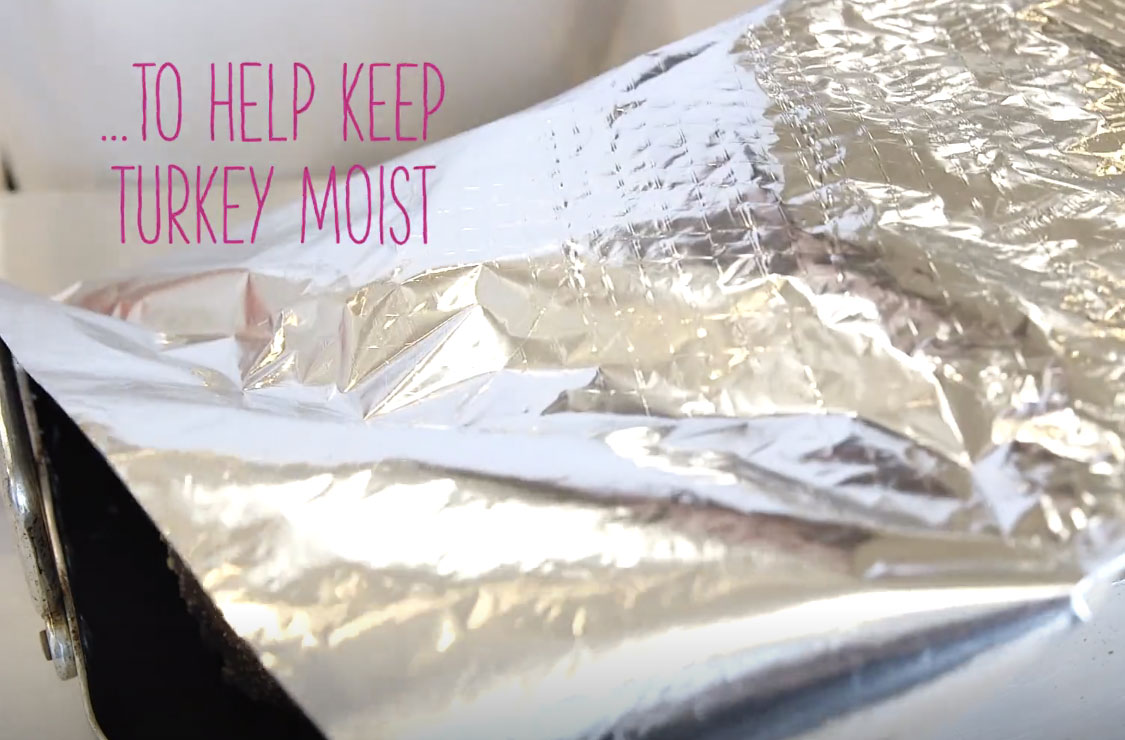
How to cook a turkey: Step 4
Loosely cover the turkey with a large sheet of foil and scrunch it around the sides of the tin to seal. This will help to keep the steam inside the foil as it cooks, keeping the turkey moist.
Calculate the cooking time allowing 20 mins per kg plus an extra 70 mins (a 5-6kg bird will take approx 3-31/2hrs. Baste the turkey every hour with the cooking juices and remove the foil for the final 30 mins of cooking time.
"To test if the turkey is cooked the juices should run clear, not pink when a skewer is inserted into the thickest part of the thigh," says Samuel.
"You can also use a meat thermometer to check it's cooked properly. Remove from the oven, recover with the foil and leave to stand for 30 mins to 1 hour before carving. Garnish with fresh herbs to serve."
Make sure you read our guide on how to dispose of cooking oil to make sure you dispose of any leftover juices or oil from the turkey in the correct way.
Watch how to cook a turkey
How long does it take to cook a turkey?
The amount of time your turkey will need to cook for will depend on its size. You can manually calculate turkey cooking times by size and weight of your turkey. It's important to cook it for long enough that it's safe - and nice - to eat but not so long that it's dry and hard to eat.
As a general rule, in an oven set at 180C/Gas 4, a turkey will need to be cooked for approximately 20 mins per kg plus an extra 1hr 10 mins. For example, a 4kg turkey will require 2 hrs 30mins.
If you're worried about how much does it cost to cook Christmas dinner, there are ways to cut costs such a choosing a smaller turkey or using a microwave to cook some of the accompaniments.
We would then suggest resting for up to 45mins before carving. Resting the meat is important for all the juices to be reabsorbed into the meat to make the turkey even more succulent.
How can I keep the turkey moist?
It’s important not to overcook the meat and to keep to the cooking times. Once the turkey is cooked leave it to rest for at least 30-45 minutes. The turkey will stay hot and the meat will relax and tenderise and be easier to carve. See our guide on how to carve a turkey for more tips and advice on carving your bird.
Resting the turkey also frees up the oven for you to cook the roast potatoes, stuffing, and sausages.
What is dry-brining?
Brined turkey is a popular method to try and make the meat of the bird as moist as possible.
Wet brining is the most popular technique, which involves submerging your turkey in salted water (you can also add lots of herbs, spices and other flavourings like Nigella Lawson does). However, this often requires a big bucket and is arguably not the most hygienic way as you cannot usually fit a turkey in a bucket in the fridge.
Dry brining is much easier and also requires much less storage space in the fridge.
To dry brine your turkey, you need to rub it all over with salt and then place it in a container (or a large bag suitable for food). This will, to begin with, draw the moisture from the turkey. The salty liquid that is then formed, will be reabsorbed by the turkey. This will also help the turkey skin to crisp up during roasting.
"If you do decide to dry brine, make the most of it and also rub the turkey with herbs and spices and include them in the container too. Festive flavours such as cloves, cinnamon, and allspice all make great additions. As do lemon or clementine zest," adds Samuel.
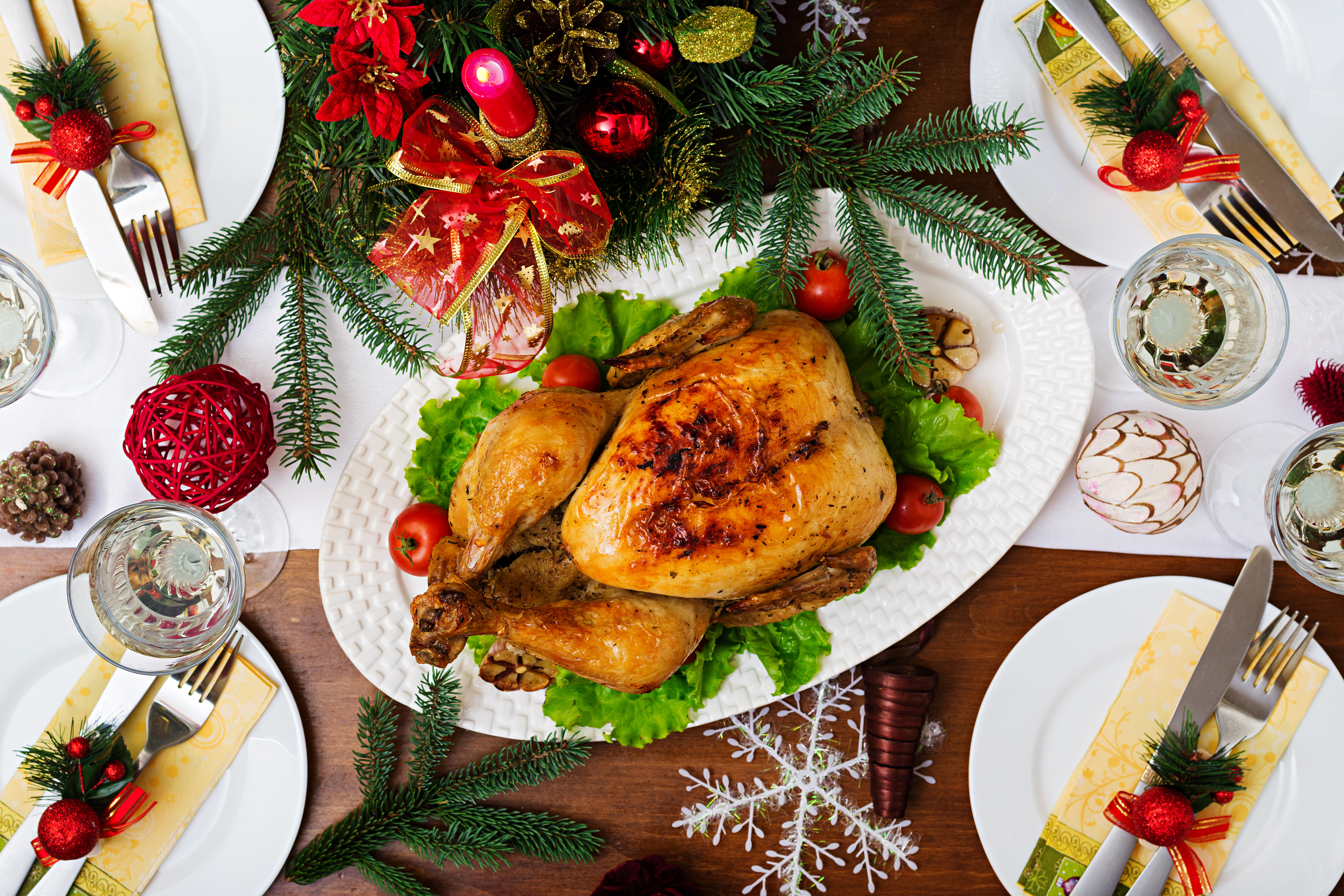
How to prepare a turkey
How to defrost a turkey
If buying a frozen turkey, allow enough time for it to defrost fully in a cool place. There are usually defrosting instructions on the packet. If there are none, the NHS recommends thawing your turkey in the fridge and that the fridge is set at 4C. It will take roughly 10 to 12 hours per kg so if your turkey weighs 4kg, it would take 40-48 hours for example.
"Because a turkey is high in protein, it is important to defrost it safely in the fridge and not at room temperature," says Samuel.
"According to food hygiene regulations, you can leave high protein foods out for up to 90 mins at room temperature. Therefore, you may want to do this just before cooking to ensure it is completely defrosted and that the turkey reaches room temperature before cooking,"
If time is running out and the bird is not fully defrosted you can immerse it in a clean bucket of cold (not warm) water.
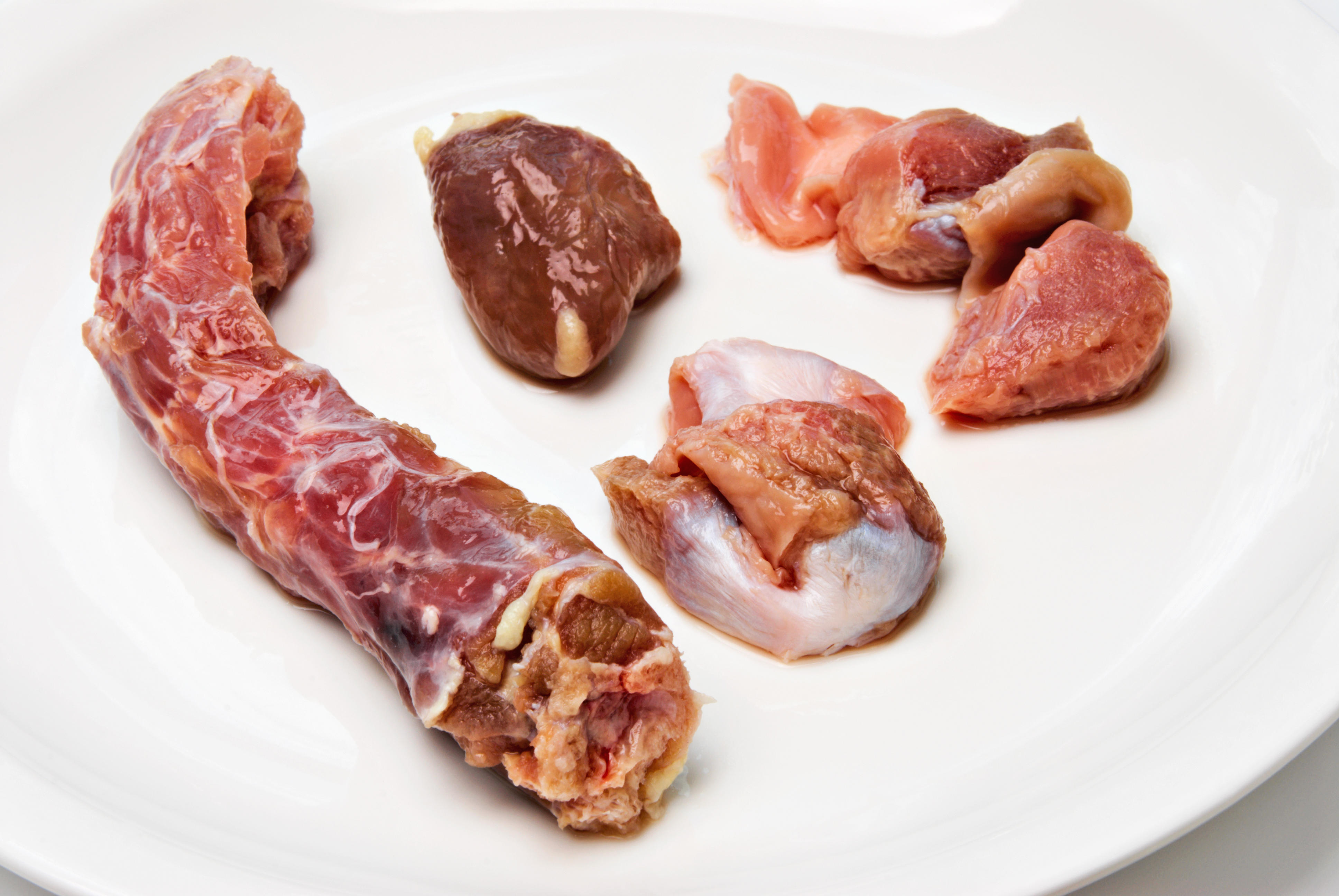
If you're not keen on removing the giblets yourself, ask your local butcher to do it.
What to do with giblets
Giblets are a general term for offal found in a bird. For a turkey, this is usually the liver and gizzard and they are usually put back in the cavity of the turkey before selling. Quite often the giblets are removed and discarded but you can use them to make your gravy even more flavourful.
In days gone by, the giblets have also been used in the stuffing and to make pasta sauces. There is even a French recipe for giblets à la Bourguignonne.
The most common use for these now is to include the giblets in the roasting tin with the turkey so that when you use the juices for the turkey gravy, they add an even meatier flavour.
How to remove the wishbone
The wishbone is a forked bone that is found between the neck and breast of a bird. It is commonly associated with the tradition of cracking the wishbone - two people split a wishbone together whilst making a wish; the winner gets good fortune and their wish may even come true. This technique started with the Ancient Romans and is still continuing today.
Samuel says: "You certainly don't need to remove the wishbone before cooking the turkey but culinary schools across the globe have been teaching the technique for generations. It also frees up more space for stuffing, if placing it under the skin."
To remove it, cut either side of the wishbone with a sharp knife and remove the bone from the flesh all around the wishbone. Once you have separated all the flesh from the bone it should pull away easily.
How to store a turkey
Most turkeys that are packaged will include storage instructions and we would recommend that you always follow these.
How to store raw turkey in the freezer
Before a turkey is cooked, it must either be kept in the fridge or the freezer. If you buy the turkey frozen then it is best to keep it in the freezer until you need to defrost it. If you buy it chilled, but there are still several weeks until Christmas, then the turkey should be frozen.
How to freeze food like your turkey? You will need to ensure you wrap it up in freezable food wrap or place it in a container suitable for freezing. This is important to stop the meat from getting freezer burn, which will dry the meat out and damage it.
How to store raw turkey in the fridge
If you purchase the turkey a few days before Christmas or you need to defrost it, then you will need to place it in the fridge. The fridge should be set on or around 4C. Again, you should keep the turkey wrapped up to stop it from drying out.
Remember, you should only defrost meat once so once you have taken it out of the freezer and brought it to fridge temperature it should not be re-frozen.
How to store cooked turkey in the fridge
Once the turkey has been cooked and you've finished carving and eating it, it will again need to be placed in the fridge or freezer.
Cooked meat must not be left out at room temperature as this can cause harmful bacteria to grow. Cool the meat within 90 mins then pop it back in the fridge or freezer.
How to store cooked turkey in the freezer
If you freeze it, it's sensible to freeze it in batches so that you can just remove what you need as and when you cook with it. Once defrosted, they should be eaten with 24 hours. If refrigerated it should be used within a few days. In the freezer, wrapped properly, it should last for up to 3 months.
If you're looking for inspiration, we have some great ideas on what to cook with leftover turkey including turkey pie, risotto, and more.
Related features:
Video of the week:

Jessica Dady is Food Editor at GoodtoKnow and has over 12 years of experience as a digital editor, specialising in all things food, recipes, and SEO. From the must-buy seasonal food hampers and advent calendars for Christmas to the family-friendly air fryers that’ll make dinner time a breeze, Jessica loves trying and testing various food products to find the best of the best for the busy parents among us. Over the years of working with GoodtoKnow, Jessica has had the privilege of working alongside Future’s Test Kitchen to create exclusive videos - as well as writing, testing, and shooting her own recipes. When she’s not embracing the great outdoors with her family at the weekends, Jessica enjoys baking up a storm in the kitchen with her favourite bakes being chocolate chip cookies, cupcakes, and a tray of gooey chocolate brownies.
- Samuel GoldsmithFreelance food writer